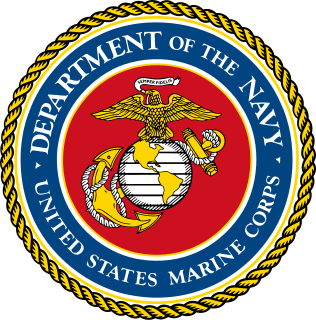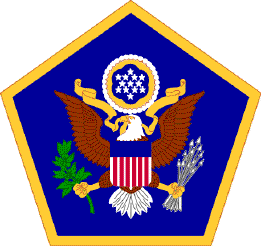
A battalion is a military unit, typically consisting of 300 to 1000 soldiers commanded by a lieutenant colonel, and subdivided into a number of companies. In some countries, battalions are exclusively infantry, while in others battalions are unit-level organizations.
A company is a military unit, typically consisting of 80–250 soldiers and usually commanded by a major or a captain. Most companies are formed of three to six or seven platoons, although the exact number may vary by country, unit type, and structure.

A regiment is a military unit. Its role and size varies markedly, depending on the country, service and/or a specialisation.

A platoon is a military unit typically composed of two or more squads, sections, or patrols. Platoon organization varies depending on the country and the branch, but a platoon generally comprises 50 people, although specific platoons may range from 10 to 100 people. A platoon is typically the smallest military unit led by a commissioned officer. The platoon leader is usually a junior officer—a second or first lieutenant or an equivalent rank. The officer is usually assisted by a platoon sergeant.

A brigade is a major tactical military formation that is typically composed of three to six battalions plus supporting elements. It is roughly equivalent to an enlarged or reinforced regiment. Two or more brigades may constitute a division.
Staff sergeant is a rank of non-commissioned officer used in the armed forces of many countries. It is also a police rank in some police services.

Gunnery Sergeant (GySgt) is the seventh enlisted rank in the United States Marine Corps, above staff sergeant and below master sergeant and first sergeant, and is a senior staff non-commissioned officer (SNCO). It has a pay grade of E-7.
Marine Air-Ground Task Force is a term used by the United States Marine Corps to describe the principal organization for all missions across the range of military operations. MAGTFs are a balanced air-ground, combined arms task organization of Marine Corps forces under a single commander that is structured to accomplish a specific mission. The MAGTF was formalized by the publishing of Marine Corps Order 3120.3 in December 1963 "The Marine Corps in the National Defense, MCDP 1-0". It stated:
A regimental combat team (RCT) is a provisional major infantry unit which has seen use by branches of the United States Armed Forces. It is formed by augmenting a regular infantry regiment with smaller combat, combat support and combat service support units.

The 14th Marine Regiment is a reserve artillery regiment of the United States Marine Corps consisting of three artillery battalions and a headquarters battery. The regiment is based in Fort Worth, Texas however its units are dispersed among 15 different sites in 12 states. Its primary weapon system is the M777A2 Howitzer with a maximum effective range of 30 km however one of its battalions has converted to fire the High Mobility Artillery Rocket System (HIMARS) weapon system.

The United States Marine Corps is organized within the Department of the Navy, which is led by the Secretary of the Navy (SECNAV). The most senior Marine commissioned officer is the Commandant of the Marine Corps, responsible for organizing, recruiting, training, and equipping the Marine Corps so that it is ready for operation under the command of the unified combatant commanders. The Marine Corps is organized into four principal subdivisions: Headquarters Marine Corps, the Operating Forces, the Supporting Establishment, and the Marine Forces Reserve.

In United States Army units, a Headquarters and Headquarters Company (HHC) is a company-sized military unit, found at the battalion level and higher. Considered one unit, a Headquarters and Headquarters Company is essentially two elements within one company. In identifying a specific headquarters unit, it is usually referred to by its abbreviation as an HHC. While a regular line company is formed of three or four platoons, an HHC is made up of the headquarters staff and headquarters support personnel of a battalion, brigade, division, or higher level unit. As these personnel do not fall inside one of the regular line companies of the battalion, brigade, or division, the HHC is the unit to which they are administratively assigned. The typical personnel strength of an average HHC is 80 to 110.
In the United States Marine Corps, the ground combat element (GCE) is the land force of a Marine Air-Ground Task Force (MAGTF). It provides power projection and force for the MAGTF.
Pentomic was a structure for infantry and airborne divisions adopted by the US Army in 1957 in response to the perceived threat posed by tactical nuclear weapons use on the battlefield.

The Ukrainian Naval Infantry Corps is part of coastal defense troops of the Ukrainian Navy. It is used as a component part of amphibious, airborne and amphibious-airborne operations, alone or in coordination with formations and units of the Army in order to capture parts of the seashore, islands, ports, fleet bases, coast airfields and other coast objects from the enemy. It can also be used to defend naval bases, vital shoreline areas, separate islands and coast objects, and security of hostile areas.
The reconnaissance mission within the United States Marine Corps is divided into two distinct but complementary aspects; Marine Division Recon and Force Reconnaissance.

The structure of the United States Army is complex, and can be interpreted in several different ways: active/reserve, operational/administrative, and branches/functional areas.
In the United States Army (USA), U.S. Marine Corps (USMC), U.S. Air Force (USAF), and U.S. Space Force (USSF), captain is a company-grade officer rank, with the pay grade of O-3. It ranks above first lieutenant and below major. It is equivalent to the rank of lieutenant in the Navy/Coast Guard officer rank system. The insignia for the rank consists of two silver bars, with slight stylized differences between the Army/Air Force version and the Marine Corps version.
This article represents the structure of the Irish Defence Forces as of May 2020:







